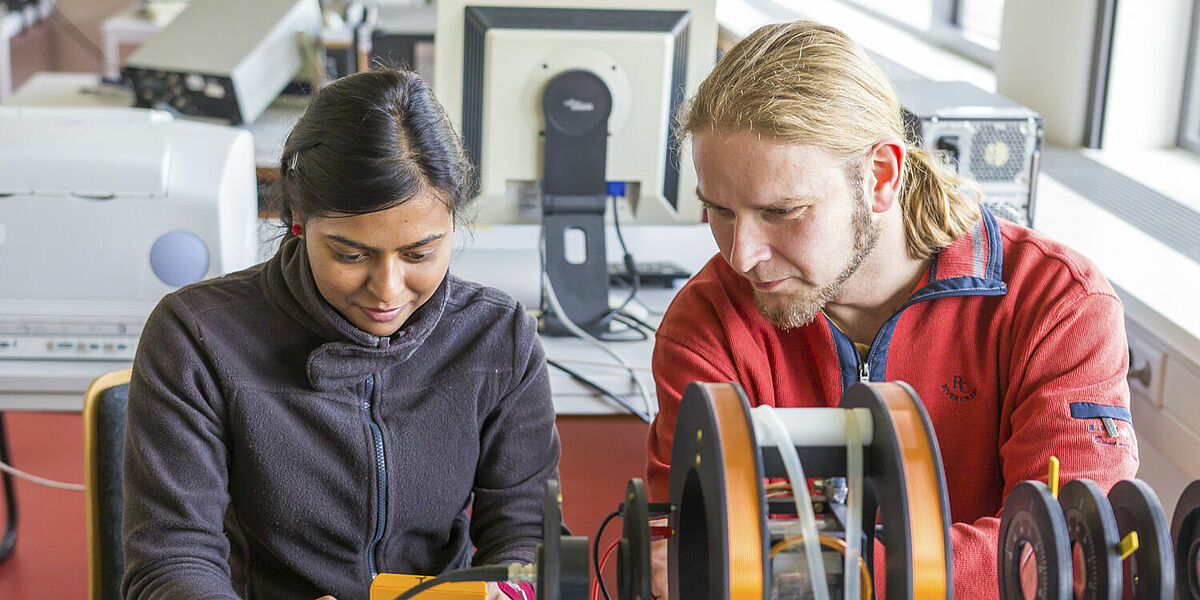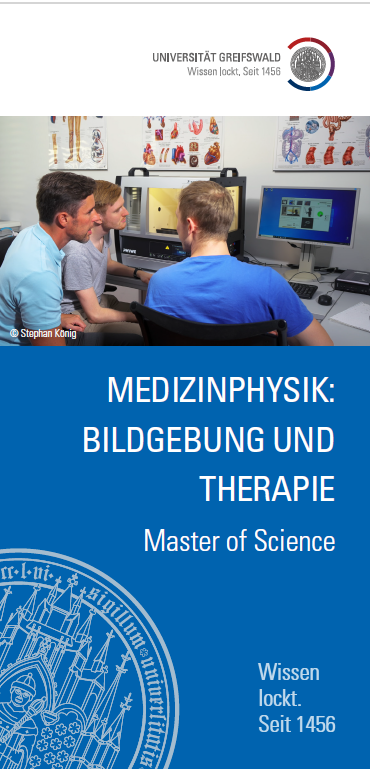Admission requirements
Admission to the master’s degree course “Medical Physics: Imaging and Therapy” is subject to proof of a successfully completed undergraduate degree. As a general rule of principle, national and international degrees gained from a degree course in the subject disciplines physics, medical engineering or biomedical engineering, medical informatics or biomathematics fulfil these admission requirements.
You should bring the following skills with you
Prospective students of the master’s degree course in Medical Physics require an undergraduate degree in physics/medical physics, biomathematics, medical informatics, or medical engineering. An interest in issues related to medical physics, the ability to think analytically and to work methodically in both theory and practice are essential for successful studies. Furthermore, programming experience or skills in Python and/or Matlab are advantageous.
This subject is about
A large number of imaging devices and therapeutic procedures are now used in medical diagnostics and treatment. Due to the complexity of these systems, skilled medical physicists require knowledge and expertise in several scientific disciplines. Working with doctors, medical laboratory assistants and engineers from various subject disciplines makes it essential to master their terminology in order to be able to communicate with them for solving specific tasks.
The master’s degree course Medical Physics: Imaging and Therapy provides modules from the fields of medical physics, mathematics, medicine and Health Care Management. Students should understand the physical and technical principles and the areas in which various procedures for measurement, diagnostics and treatment are used in medicine. Special emphasis is placed on imaging procedures (X-Ray, computed tomography, magnetic resonance imaging, medical ultrasound, positron emission tomography, scintigraphy), as well as radiotherapy and nuclear medicine. There are also classes on plasma physics and plasma medicine.
The master’s degree course Medical Physics: Imaging and Therapy has a strong focus on magnetic resonance imaging. Students are taught in-depth knowledge about the sequence development, image reconstruction and data analysis of various MRI procedures. These include e.g. quantitative MRI (e.g. 4D flow MRI, perfusion and ASL), structural MRI (e.g. T1, T2, Diffusion Tensor Imaging) and MR Angiography.
Students can choose and sensibly combine the additional elective modules from various related fields of physics, mathematics, computer science, and medicine in accordance with the knowledge and skills gained in undergraduate studies.
Classes in the first three semesters are taught in the form of lectures, seminars, and exercises. The degree course is linked to the research performed in the fields of medicine and physics at the natural sciences campus. The fourth semester is reserved for the six-month master’s dissertation. The dissertation is defended at a colloquium.
Graduates from this master’s degree course
As technology advances, medical physics is becoming increasingly important and extends to ever more complex areas. Medical physicists find employment in healthcare centres, at hospitals and diagnostic facilities, as well as in research and development at universities and in the industry. They operate large medical equipment and carry responsibility for the safety of staff and patients. Medical physicists are involved in the development of the hardware and software of medical technology systems or are responsible for their sales and the technical customer service. Graduates can complement their degree studies with a subsequent two-year professional qualification to become a Medical Physics Expert (information is available from the Public Health Office of the respective federal state). Furthermore, graduates can also take on positions in research, as well as in a broader field of technical physics, engineering and information technology.
General information on the degree course
The standard length of study for the degree course Medical Physics, including the master’s dissertation, is four semesters and graduates obtain the university degree Master of Science (M.Sc.). The compulsory and physics modules take place at the Institute of Physics or University Medicine Greifswald, in collaboration with the Department of Diagnostic Radiology. In a modern study environment, future graduates receive practice-oriented training on training devices for X-Ray, medical ultrasound, computed tomography, as well as a clinical Doppler ultrasound and MRI scanner that meet the newest technical standards. Students can expect effective learning methods with supervision in small groups.
Further links


